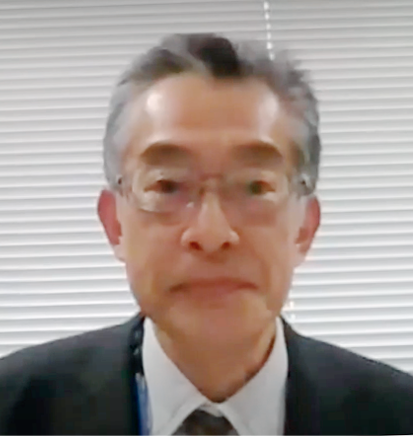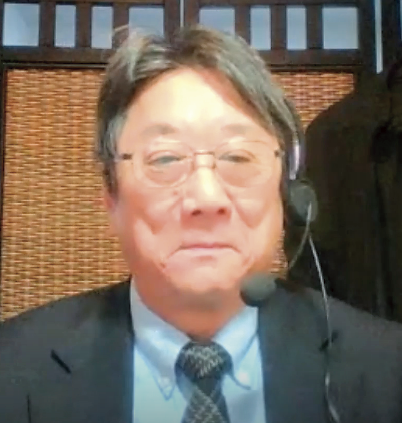October 2022

Regional development initiatives are happening around Japan, taking a variety of different approaches to the goals of relieving the overconcentration of people in Tokyo, putting the brakes on depopulation in rural regions, and revitalizing Japan as a whole, including DX, human resource development, and regional co-creation. In response, Hitachi teamed up with Hokkaido University to open the Hitachi Hokkaido University Laboratory in June 2016 as a facility where they can collaborate on open innovation. A key focus of the laboratory is to conduct joint research on resolving the various societal challenges currently facing Hokkaido, which include aging demographics and a low birthrate, depopulation, a stagnating regional economy, and global warming. This article is one of three reports on the presentations given at the Third Forum of Hokkaido University and Hitachi Hokkaido University Laboratory held in February 2022. This part of the forum addressed the topic of local industry development and covered work on carbon neutrality and regional co-creation by HEPCO Group, Hitachi’s development of self-sustaining local energy systems, and some ideas from Tomomi Marutani, Emeritus Professor at Hokkaido University, on how to go about adapting to climate change.
 Shigeru Yonaga
Shigeru Yonaga
Director and General Manager of Research & Development Department, Hokkaido Electric Power Co., Inc.
Based on Hokkaido Electric Power Company (HEPCO) Group’s management philosophy of respect for humanity, contributions to local communities, and efficient management, Research & Development Department at Hokkaido Electric Power Co., Inc. is pursuing a number of initiatives aimed at achieving carbon neutrality by 2050.
The department’s work in the field of renewable energy has targeted its wider deployment, the establishment of a reliable and efficient electric power system, and the provision of emergency power during disasters. This work includes a demonstration project featuring the combined control of distributed energy resources including small-scale renewable generation and electric vehicles (EVs) so as to make the most of what they have to offer (see Figure 1). In our work on establishing a hydrogen supply chain powered by renewable energy, our aim is to put in place platforms for the reliable, low-cost production of hydrogen that take maximum advantage of existing infrastructure.
The department is also involved in a wide variety of initiatives aimed at overcoming local challenges in a range of areas, with a particular focus on the use of electric power. These initiatives include promoting EVs as a way to maintain the region’s transportation infrastructure in the face of aging demographics, a low birthrate, and a falling population, as well as local sourcing of renewable energy, business continuity planning (BCP) by local government, and the use of community currency to keep value circulating locally. We are also promoting the wider use of net-zero-energy buildings (ZEBs) suited to cold climates, encouraging agriculture through the trialing of closed-system farms for cold-climate regions, and participating in a co-creation initiative with the town of Niseko for reducing carbon emissions called the NISEKO Life and Model District Construction Project.
Figure 1 | Distributed Energy Resource Aggregation Demonstration 
 Takashi Takemoto
Takashi Takemoto
Deputy Laboratory Manager, Hitachi Hokkaido University Laboratory, Center for Exploratory Research, Research & Development Group, Hitachi, Ltd.
Demand for electric power in Hokkaido is spread across the region, influenced by factors such as depopulation and the concentration of the remaining population in Sapporo. This makes the development of local energy systems vital to the creation of a sustainable local communities that will avoid stagnation in our primary industries and the degradation of civil defense capabilities.
In response, Hitachi has been developing self-sustaining local energy systems based on local sourcing that will be small in scale and cheap to install as well as capable of operating on their own during disasters. The system is made up of community-level nanogrids that use EVs to share electric power with one another and provide more reliable operation of the electricity system and higher electricity revenue while also promoting regional revitalization and lower carbon emissions by local industry (see Figure 2).
Figure 2 | Self-sustaining Local Energy System Based on Local Sourcing 
 Tomomi Marutani
Tomomi Marutani
Director, Hokkaido Research Organization
Emeritus Professor, Hokkaido University
Speaking as someone who has studied natural disasters, transforming nature by human effort is, in principle, impossible. Rather than changing the natural environment (mitigation), problems such as climate change call for changing people themselves (adaptation).
Generally, the more capital investment we pile onto the task of acquiring resources, the more sensitive we are to social (economic) change, while the more space we devote to resource acquisition, the more sensitive we are to natural (climatic) change (see Figure 3). Rather than everyone acting independently on global warming and other forms of climate change, it is important that we put measures in place that are founded on an integrated approach like this.
Japan has very low level of self-sufficiency in food. It depends on imports for most grains such as wheat and corn and routinely imports a higher percentage of fruit, beef, and seafood than it produces domestically. The key to overcoming this situation in this era of climate change lies in the extensive land area of Hokkaido. Our population may be low, but from a different perspective, Hokkaido has a large land area per capita. You could say that this is the region’s greatest resource, and adapting to climate change is the greatest challenge we have to overcome.
Whereas Japan as a whole currently only produces 38% of its food, production in Hokkaido accounts for the largest part of the nation’s primary industries of cropping, dairy farming, livestock, and fishing, equating to 222% (the highest percentage anywhere in Japan) of local demand when calculated on a calorie basis. If we are to put this great strength to use, what is needed, I believe, are innovative adaptation measures that make the most of our extensive land area, including aquaculture, farming, forestry, and the use of other new resources such as water and snow.
Figure 3 | Relationship between Resource Production and Land 